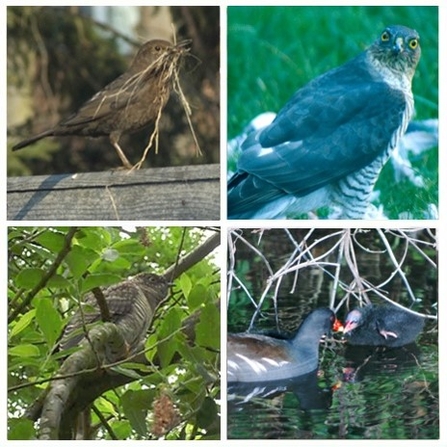With the help of a group of dedicated volunteers, we have been monitoring numbers of breeding birds on our nature reserves for many years. If you would like to get involved, read on to find out more about what is involved and see the bottom of the page for how to contact us.
Our breeding bird surveys involve 6 early morning visits between April and June, walking a fixed route around the site and recording all birds seen and heard on a map. Often it is mostly based on what you can hear, as many of the birds are very good at staying hidden! We also record behavior, e.g. if a bird is seen carrying nest material, or if two males are interacting at the boundary of their territories. We then combine the records from all 6 visits to get an idea of where birds are likely to be holding territories, e.g. a singing male in the same place on each visit.


